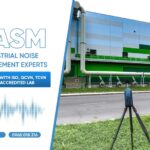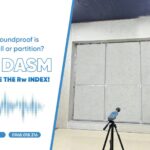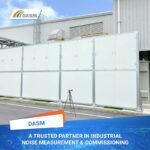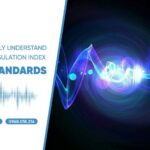Test for Measurement of Airborne Sound Attenuation between Rooms proactively controls noise; defines procedures and data for assessing sound isolation between two rooms or parts thereof in a building…
Overview of the test for Measurement of Airborne Sound Attenuation between Rooms
Test name: Standard Test Method for Measurement of Airborne Sound Attenuation between Rooms in Buildings
Test method: ASTM E336 – 20; Standard Test Method for Measurement of Airborne Sound Attenuation between Rooms in Buildings [1].
Conducted at: In situ in building’s rooms
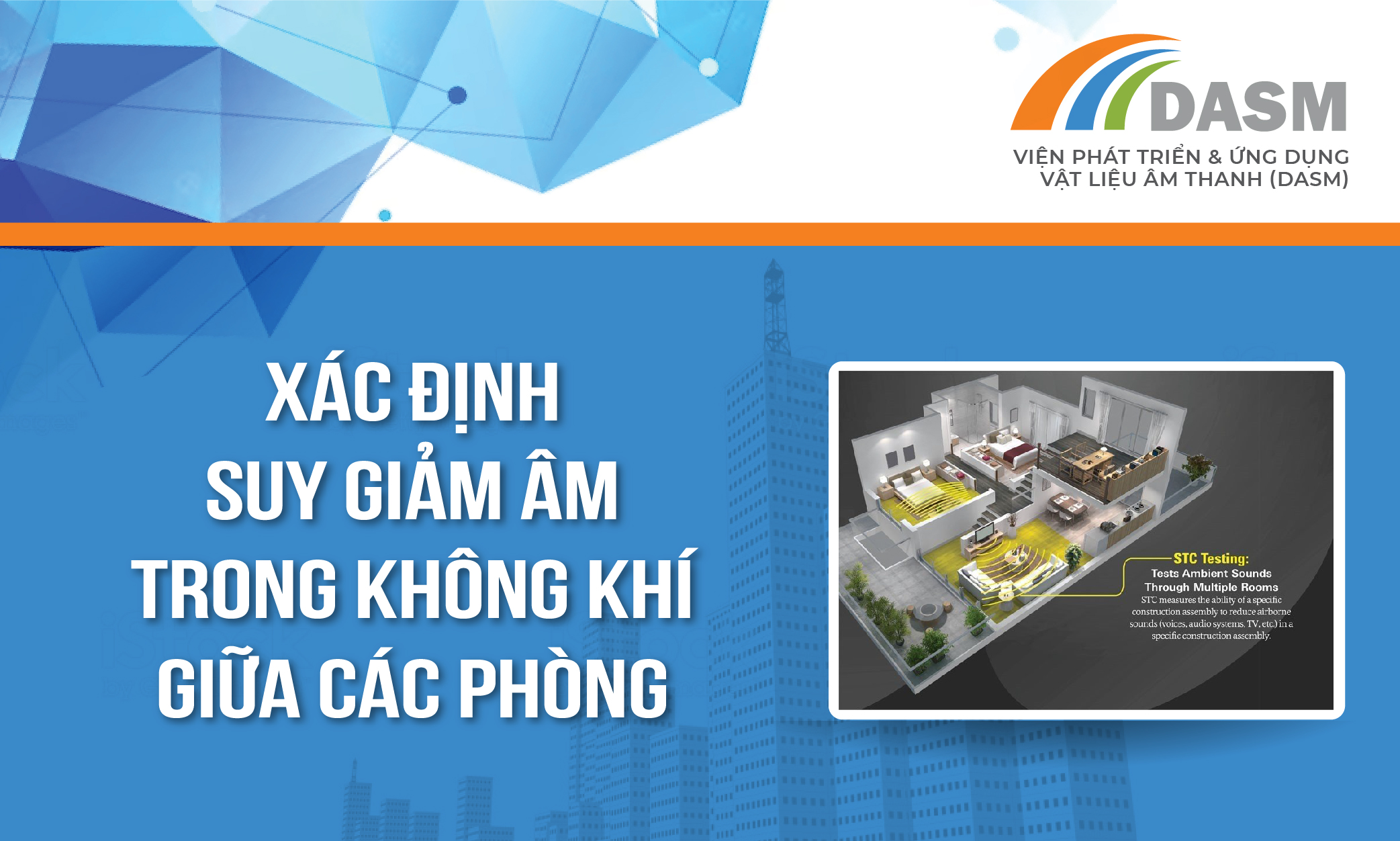
1. Test target and subjects
– Test target
The sound isolation between two spaces in a building is influenced most strongly by a combination of the direct transmission through the nominally separating building element (as normally measured in a laboratory) and any transmission along a number of indirect paths, referred to as flanking paths. Fig. 1 illustrates the direct paths (D) and some possible structural flanking paths (F). Additional non-structural flanking paths include transmission through common air ducts between rooms, or doors to the corridor from adjacent rooms. Sound isolation is also influenced by the size of the separating partition between spaces and absorption in the receiving space, and in the case of small spaces by modal behavior of the space and close proximity to surfaces.
The main part of this test method defines procedures and metrics to assess the sound isolation between two rooms or portions thereof in a building separated by a common partition or the apparent sound insulation of the separating partition, including both direct and flanking transmission paths in all cases. Appropriate measures and their single number ratings are the noise reduction (NR) and noise isolation class (NIC) which indicate the isolation with the receiving room furnished as it is during the test, the normalized noise reduction (NNR) and normalized noise isolation class (NNIC) which indicate the isolation expected if the receiving room was a normally furnished living or office space that is at least 25 m3 (especially useful when the test must be done with the receiving room unfurnished), and the apparent transmission loss (ATL) and apparent sound transmission class (ASTC) which indicate the apparent sound insulating properties of a separating partition including both the direct transmission and flanking transmission through the support structure. The measurement of ATL is limited to spaces of at least 25 m3 where modal effects create fewer problems. With the exception of the ATL and ASTC under specified conditions, these procedures in the main part of the test method are only applicable when both room volumes are less than 150 m3.
The NR and NIC between two locations are always measureable and reportable though conditions present will influence how measurements are performed. With one exception (see 13.5.1), it is required that the NIC always be reported. Restrictions such as minimum room volume or dimensions or maximum room absorption are imposed for all other measures and ratings in this standard. Thus, conditions sometimes exist that will not allow NNR (NNIC) or ATL (ASTC) to be reported. Where a partition between rooms is composed of parts that are constructed differently, or contains an element such as a door, the ATL and ASTC of the individual elements or portions of the partition are not measurable without modifications to the rooms. To evaluate the field performance of a door less than 6 m2 in area, use Test Method E2964. The various metrics are inherently different quantities, so that NIC cannot be used instead of NNIC or ASTC to evaluate compliance with a specification when the specification is written in terms of one of those metrics that cannot be reported with the conditions present.
– Test subjects
2 rooms or rooms in a building.
2. Experimental procedure
Steps:
- Prepare and arrange equipment, microphones, scene…
- Perform the test
- Process and report results.

3. Note on experimental conditions
No construction elements separating and identifying source and receiving rooms shall be modified by any temporary means to improve performance unless an attempt is made to measure field transmission loss in accordance with Appendix A1. Any permanent modifications made after the start of testing will be reported.
There will be flanking sound transmission in the structure. No attempt to prevent flanking sound transmission such structures shall be made.
Main rib collapse due to doors or other openings into common areas adjacent to the source and receiving rooms may exist adjacent to a given main space as shown in Figure 4. Any coupled spaces included in Measurements must be verified. For a space to be considered a coupled space for the purposes of this standard, the following conditions must be met:
The gap between the primary and secondary spaces must be at least 33% of the total area of the partition separating the primary and secondary spaces.
Unless one or more of the dimensions of the sub-space equipment is less than 1m (such as spaces A1, A2 and B in Figure 4), it must be demonstrated by measurement with the operating sound source that the difference average A-weighted overall sound level in primary and secondary spaces (such as D and F in Figure 4) is no more than 6dB.
If either dimension of the secondary space in the plane of the opening between the spaces is less than 1m (such as space B in Figure 4), the direction perpendicular to that plane must not be more than 1m.
The role and importance of the Test to determine sound attenuation in the air between rooms
The test to determine sound attenuation in the air between rooms performed by the Institute for Development and Application of Acoustic Materials helps meet all practical needs of customers and businesses who want to:
- Identify procedures and metrics to evaluate the acoustic isolation between two rooms or parts thereof in a building separated by a common partition or the apparent sound insulation of the separating partition, including the direct and flanking transmission in all cases.
- Identify procedures and metrics for evaluating sound isolation between two rooms or portions thereof in a building.
- Proactively control noise and sound.
- Meets sound standards – soundproofing for two rooms or rooms in the building.
- Optimize research and development of products, structural materials, solutions… to help absorb sound and insulate two rooms or rooms in the building.
DASM will conduct consulting and design work to create solutions for shapes/structures/materials used to calibrate customer samples in a streamlined, effective, and cost-effective manner (in case case does not meet standards).
If in the past, you still had some concerns and worries and had to spend a lot of fees for similar activities abroad, now you just need to contact DASM. We will proactively carry out the entire remaining process in the fastest possible time to perfect the customer experience with us: DASM provides audio consulting services with truly outstanding quality, at a high level. Prices are considered the most competitive in the industry along with thoughtful and dedicated customer care policies.
Meaning of acoustic testing service at DASM
Today’s globalized commercial life opens up countless new markets and sources of supply across five continents. Accompanying it are international regulations and standards that help customers easily evaluate quality – trace product origin, and choose suitable/excellent products. In particular, they also support manufacturers to constantly improve and perfect technology, techniques, materials, production methods, sales… etc.
Institute for Development & Application of Acoustic Materials (DASM) is a pioneering, comprehensive, professional and leading prestigious brand in Vietnam in the field of acoustics. On January 12, 2023, DASM was granted certificate No. 114/TĐC – HCHQ by the Directorate for Standards, Metrology and Quality (Ministry of Science and Technology), certifying that it has registered testing activities for multi-purpose synthesis. major in the field of Mechanics (registration number: 707/TN – TDC).
Our acoustic testing services provide customers with practical, professional results to meet sustainability, standard performance, optimal solutions – consulting – design adjustments… for their needs. products and services. From there, you will update, meet and adapt to constantly changing international standards to achieve breakthroughs in revenue, profits and brand enhancement.
At the same time, they are also meaningful in promoting the optimization of production processes – product marketing quickly and economically; contributing to improving value, expanding markets, and spreading the advantages of products and services of businesses in Vietnam, the region as well as in the international arena.
If you want to perform a Test to determine sound attenuation in the air between rooms, please contact the Hotline for detailed advice!

